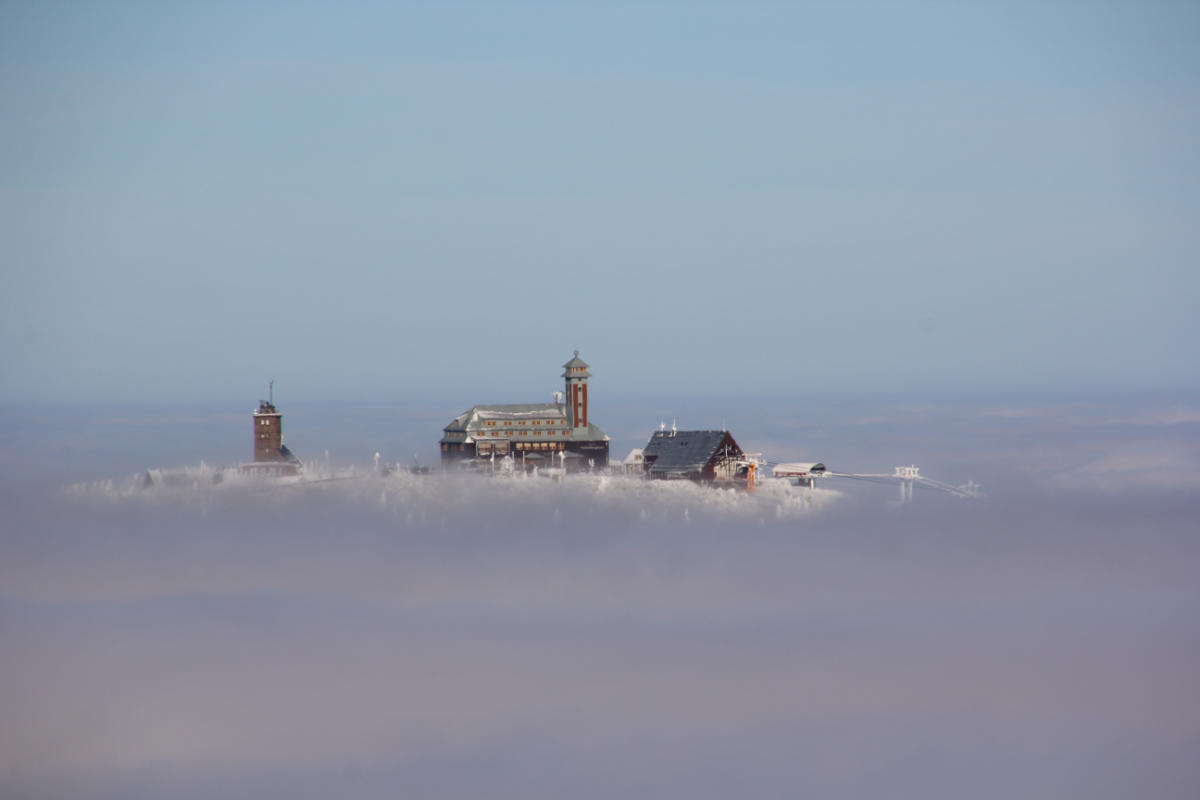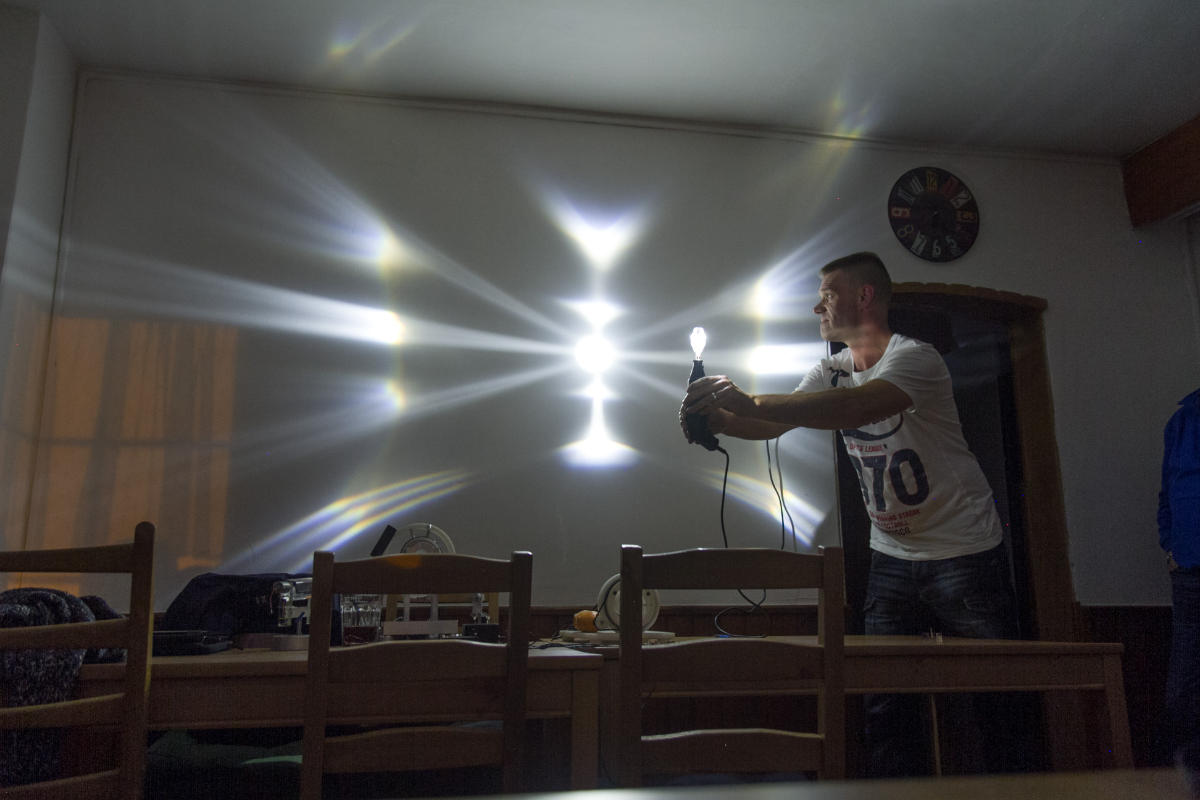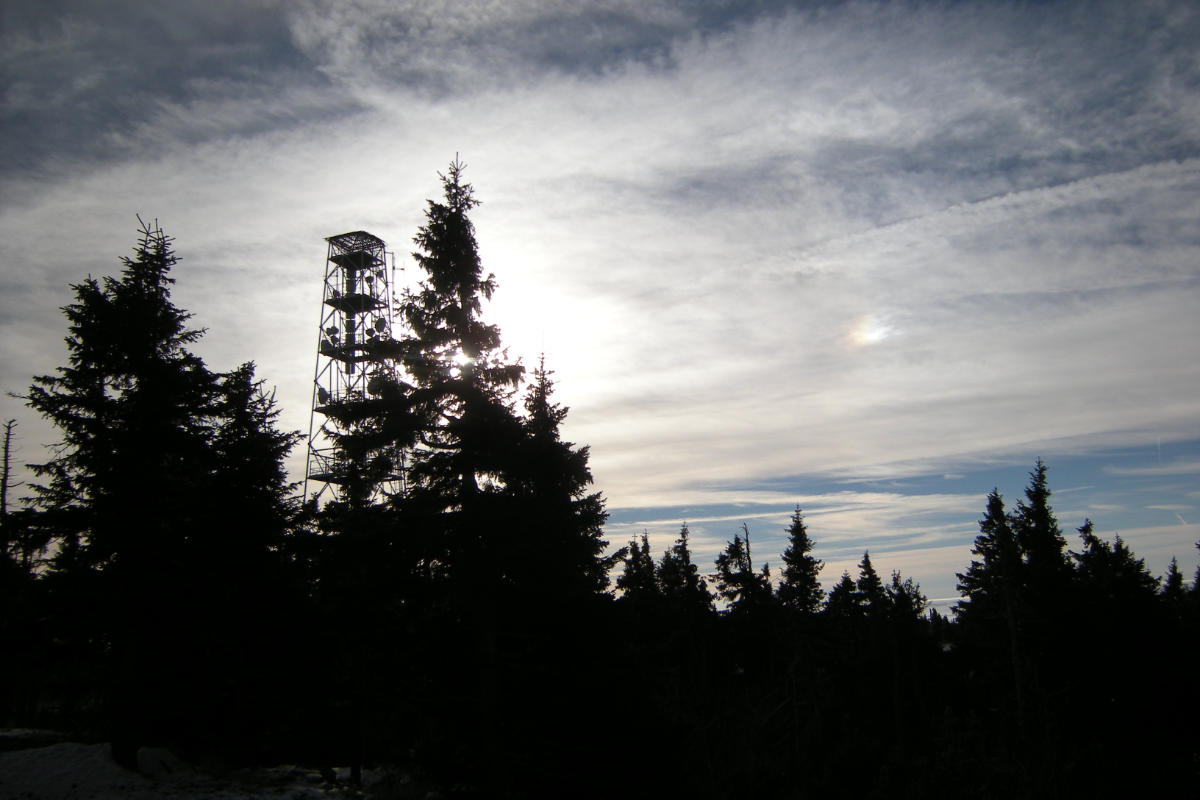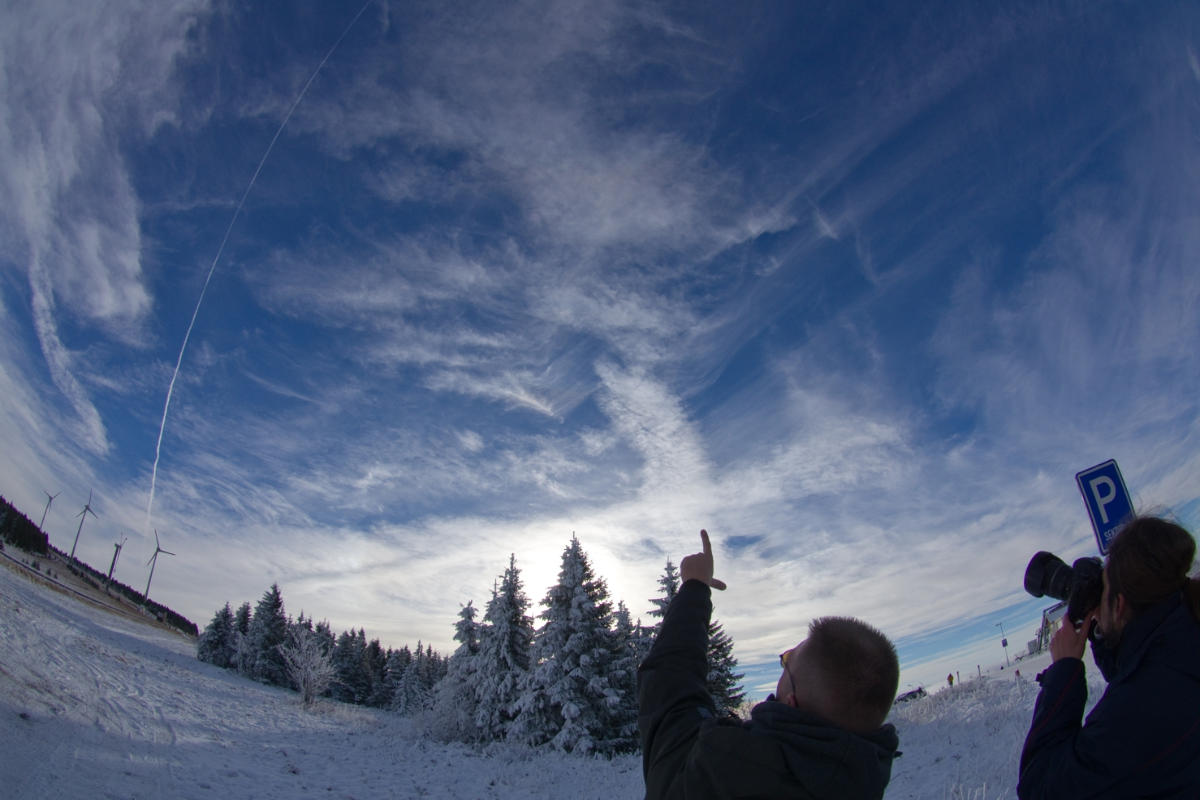11/28 - Arrival
For the 12th time, enthusiasts of halos and other atmospheric phenomena gathered in the form of a "halo meeting". Over the past 5 years, these meetings have always been held in places that have stood out for special ice fog halo phenomena. After Sudelfeld in Upper Bavaria and Davos in Switzerland, this time the choice fell on the Fichtelberg-Keilberg area, where ice fog halos occurred several times in January and February 2014. In particular, the "Antarctic" phenomenon observed by Claudia and Wolfgang Hinz in the Neklid/Unruh ski area on 30.01.2014 was decisive here. Claudia and Wolfgang organized the accommodation for us in the former residence of the Erzgebirge home poet Anton Günther, which had been converted in the past into a group accommodation for winter sports enthusiasts.
Those participants who reached the destination in daylight on Friday were lucky enough to catch a few rays of sunshine. In the Neklid area, even a few ice fog halos such as the 22° halo and the upper tangent arc appeared in the afternoon. However, many arrived in the dark, where it turned out to be a challenge to find the right turn to Boží Dar in the dense fog behind Oberwiesenthal. Overall, our guest town was almost constantly shrouded in fog throughout the weekend, while the peaks of Keilberg and Fichtelberg rose above the fog. Unfortunately, due to a change in wind direction, it was not ice fog, but ordinary water droplet fog.
After dinner on Friday evening, the lecture program began with contributions from Anke and Manfred Hamann about auroras in Lapland, captured in film and photo, and a slideshow of the highlights of the year by Michael Großmann. Later, a few steps behind our accommodation at the edge of the village, the traditional "Sudelfeld monsters" were staged with Micha's LED flashlight as a light source and promptly renamed to "Boží Devils" (despite the somewhat dubious religious implications of this creation as "God-Devil"). The accompanying stiff breeze made us quickly disappear back into the warmth for a cozy end to the evening.
29.11. - Saturday
After lunch in one of the local inns, we continued our lecture program well-sated. Elmar Schmidt dedicated himself to the specific problems of the circumhorizontal arc as a type of halo, whose required threshold value of the sun or moon height (58°) is rarely exceeded in Germany. Alexander Haußmann dealt with possible ice crystal forms and orientations to simulate the relatively bright subsun arc in the Neklid phenomenon of 01/30/2014.
For sunset observation, we drove to the Fichtelberg just in time, where the weather station was spontaneously opened for us, allowing us to enjoy an optimal view in all directions. Half an hour before sunset, the glory with its mountain shadow was already visible on the fog. For our mountain observers, this is a nearly everyday sight, but for many others, it was the first sighting of glory without an airplane window in between. Only then it is possible, for example, to verify the strong polarization of the glory described in the literature in reality.
In the other direction (towards the so-called "Little Fichtelberg"), shadows projected by trees were again visible in a strip of fog at the same time. Unlike the morning observation, the fog now presented itself in the golden-yellow color of the setting sun. Additionally, our changed viewpoint (at a greater distance above the forest) clearly demonstrated that all light and shadow beams, despite the perspective impression from up close, are always parallel to each other in space.
The sunset gave us a left sundog (on the verge of an "upper tangent arc," see Meteoros No. 3/2011, p.76) as well as an upper light pillar in near-horizon cirrus. The solar disc appeared quite strongly flattened vertically before it reached the horizon, but directly on the horizon, it "spread wide." As a result, the exact moment of its complete disappearance was difficult to determine, since a bright strip close to the horizon lasted a few seconds longer than usual. This somewhat resembled the Novaya Zemlya effect, but there a strip-like piece of the sun is lifted up by anomalous refraction by a few degrees. Unfortunately, there were no detached segments or distinct green flashes. However, Claudia was able to catch a glimpse through the binoculars of a mirage-distorted image of the Großer Arber, which unfortunately was quickly obscured by a cloud stripe on the horizon.
Following this outdoor session, the theory continued: Alexander provided an overview of the systematics of the halo phenomenon of Miesbach (01.11.2014, observed by Thomas Klein) in a second lecture on the occasion of the 22°- and 46°-Lowitz arcs and possible naming variants. This was followed by a contribution from high mountain practice as a balance: Claudia showed her best shots from the Zugspitze. After a (slightly smaller compared to the lavish lunch) dinner at the inn, Micha demonstrated his new "Halomator 3" to us. This setup allows a Plexiglas ice crystal model to be rotated on all three spatial axes solely with electric motors. This makes an experimental simulation of the 22° ring possible even without a compressed air supply. Surprisingly, this supposedly simplest type of halo requires the greatest effort when it is to be recreated with a single crystal model. As an addition, Micha showed us the parry-shaped and lateral arcs ("plate arcs") on a pyramid crystal model rotating uniaxially in the plate position, i.e., with all 20 faces and the ice inclination angle in place.
Alexander continued the series of internal experiments with the presentation of an "oil drop rainbow." In this experiment, many small oil droplets are made to float in a cube-shaped vessel filled with a water-ethanol mixture. A primary rainbow results at about a 90° deflection angle due to the relative refractive index of the floating oil droplets of 1.08. The qualitative difference from halo motor and spectrodrome experiments lies in the fact that many scattering bodies (ice crystal or crystal model, water or oil droplets, water jet, glass beads, etc.) are involved in creating the effect rather than just a single one. Therefore, just like a natural rainbow or halo, the oil drop rainbow requires an imaging optic (eye, camera) to be visible and does not project an image "by itself" onto a wall. Compared to glass bead rainbows, where the scattering bodies are distributed two-dimensionally, a real three-dimensional distribution can be replicated with the oil drop rainbow.
Finally, some brave souls ventured on a night excursion into the Neklid area, since there was still a certain chance of ice fog halos with the waxing moon. However, this time it should also "only" remain with fog bows, which were again produced with the brought lamp. In the process, even exceptionally textbook specimens with pronounced side and interference bows were obtained. This was probably due to the fact that the relatively narrow beam of light from the lamp only illuminated a small fog volume (and thus correspondingly homogeneous in terms of droplet size distribution). The fog boundary was still at the height of Neklid, so only a few steps were enough to enjoy a magnificent starry sky. Cold and wind then brought the venture to a more or less brisk end.
30.11. - Sunday
For Sunday, an excursion to the summit of Keilberg was scheduled, during which we finally got to see a few halos – although quite classic in cirrus, but at least also with a weak supralateral arc. Since the return journey passed through the Neklid area, almost all participants gathered there once more. Meanwhile, halo activity had again somewhat increased, so that as a highlight, even a short-lived piece of the concave Parry arc could be observed collectively. This news also tempted Claudia and Wolfgang to return to Neklid, making the big farewell on the historic ground of the great halo phenomenon of 30.01.14. Though the hoped-for ice fog halos unfortunately mostly stayed away at this meeting as well, the mix of lectures, excursions, and experiments was well received by everyone and the AntonGünther-Baude in Boží Dar is already booked for the 13th meeting of atmospheric phenomena observers from 26-29.11.2015. One program point is already certain: The complete tour of the Fichtelberg weather station, which celebrates its 100th anniversary in 2016.
Author: Alexander Haußmann



